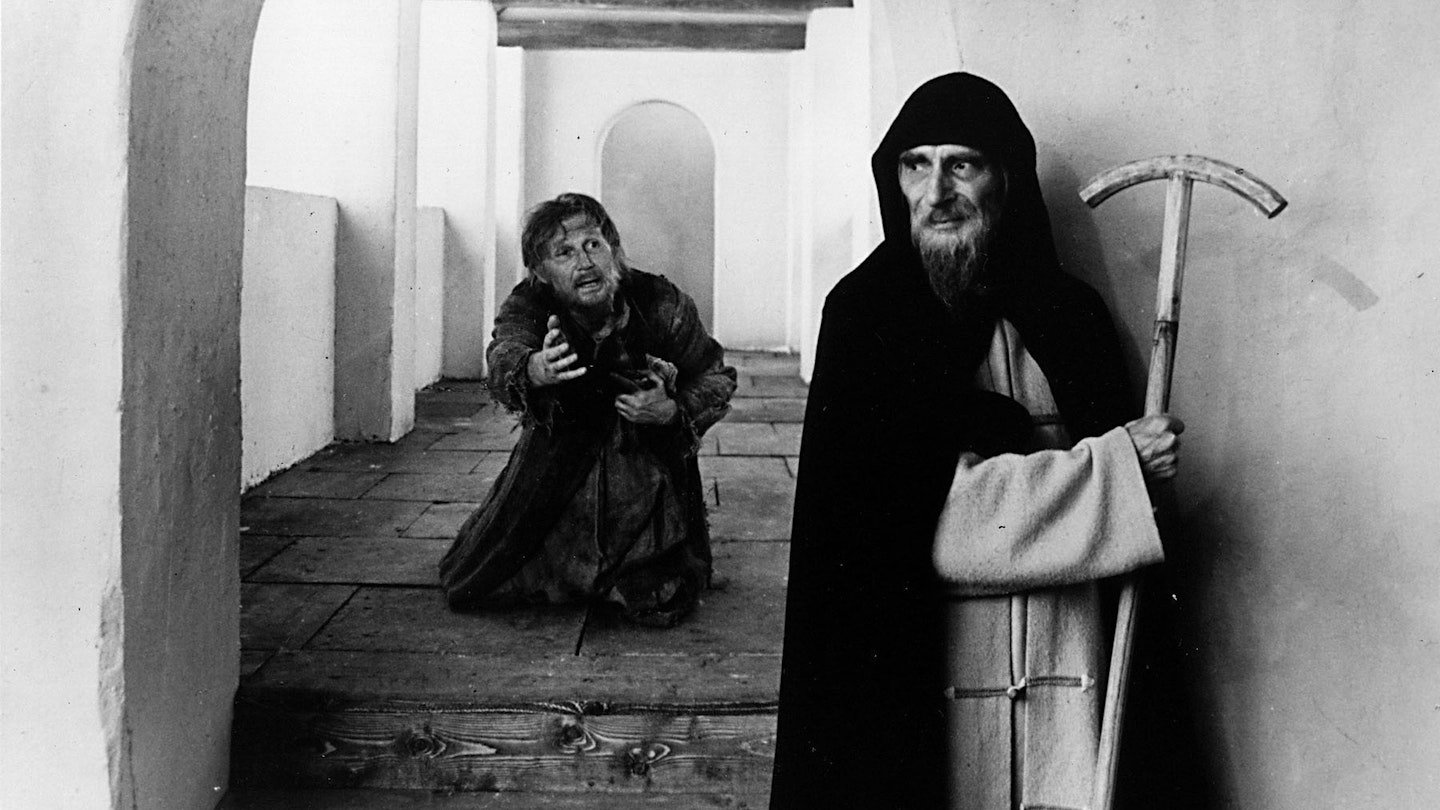Divided loosely into 10 chapters, this is less a monochrome chronicle of icon painter Andrei Rublev's life between 1400-25 than a meditation on the responsibility of the artist and mankind's inveterate response to war, chaos and oppression.
`I do not understand historical films which have no relevance for the present,' Tarkovsky once wrote and, thus, it's easy to see why the film was withheld from Soviet audiences after it was completed in 1966. Tarkovsky had actually begun working on the screenplay with Andrei Konchalovsky before he had finished his debut feature, Ivan's Childhood (1962). But, despite its favourable reception at Cannes in 1969, Leonid Brezhnev refused to sanction Andrei Rublev's domestic release. Although some critics have suggested that the depiction of the pitiless Mongol-Tartar tyranny angered the Kremlin, a contemporary newspaper averred that the film had slandered a national hero by showing him as a self-doubting craftsman rather than an instinctive genius who had helped to spark a Russian renaissance in the face of philistinic repression.
The film has been interpreted in many ways, with some seeing it as an allegory of Tarkovsky's own struggle to produce enduring beauty in a hostile environment. But what it certainly isn't is a factual biography, as Rublev remains an elusive enigma who is as often absent from the screen as he is at the centre of events. He may feud with a rival over God's relationship to humanity and kill a man to protect a deaf-mute girl in the church that has been vandalised by barbaric iconoclasts. But Tarkovsky is more concerned with images than deeds and it's the balloon flight over the Breughelesque countryside, the pagans carrying torches through the woods, the casting of the bell and the various still life landscapes, interiors and visages that linger like the colour fragments of Rublev's frescoes in the climactic coda.
